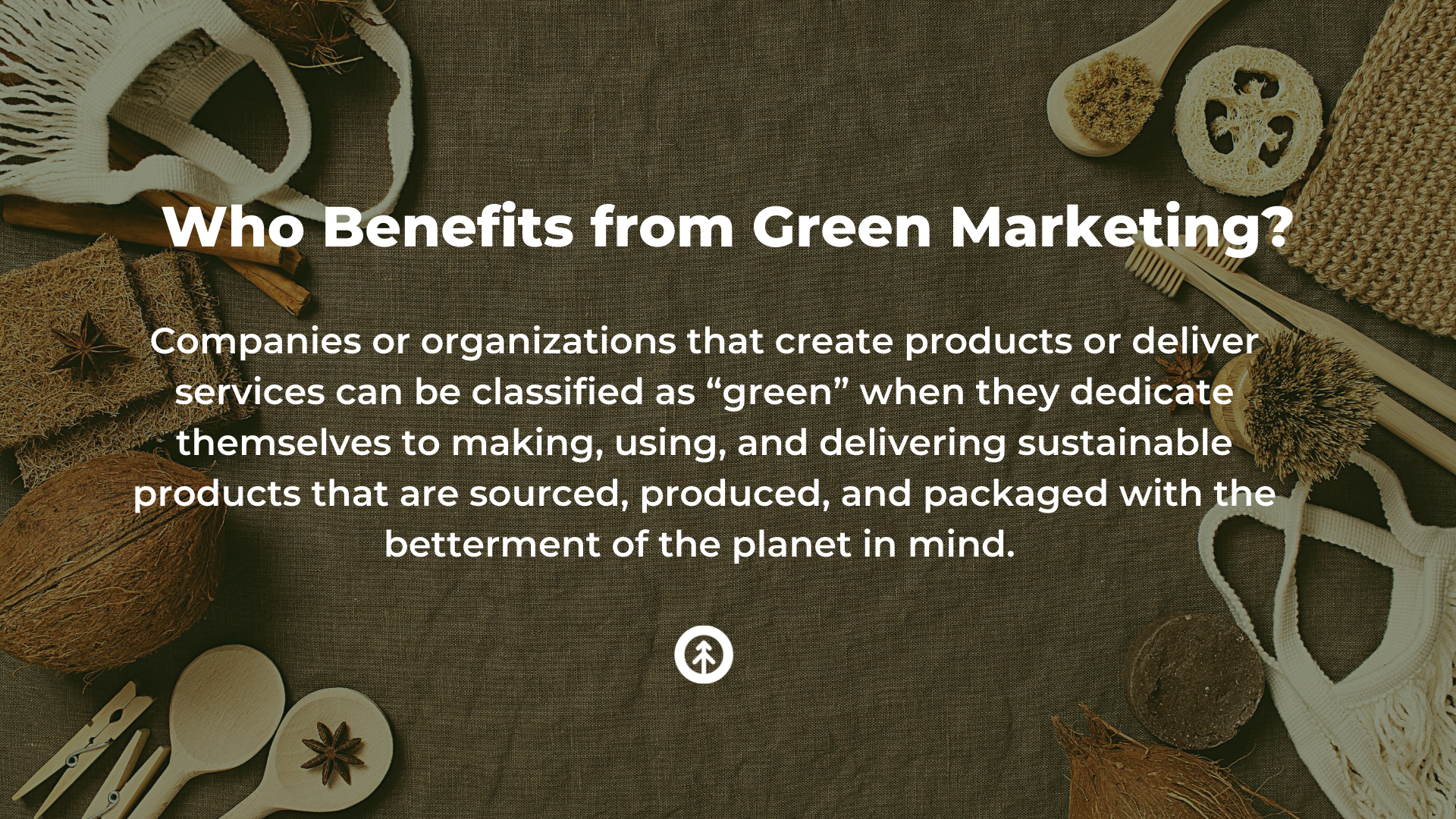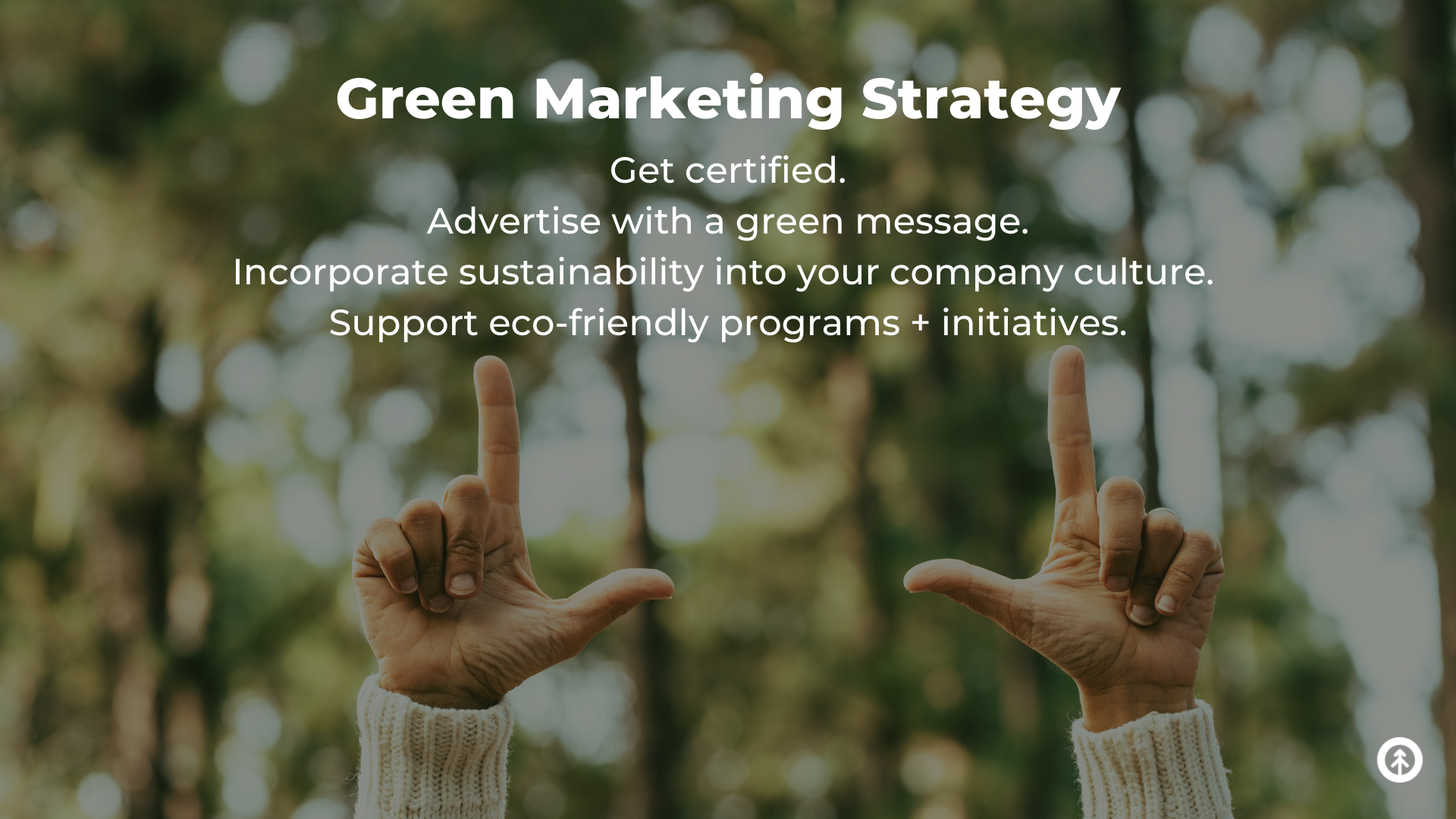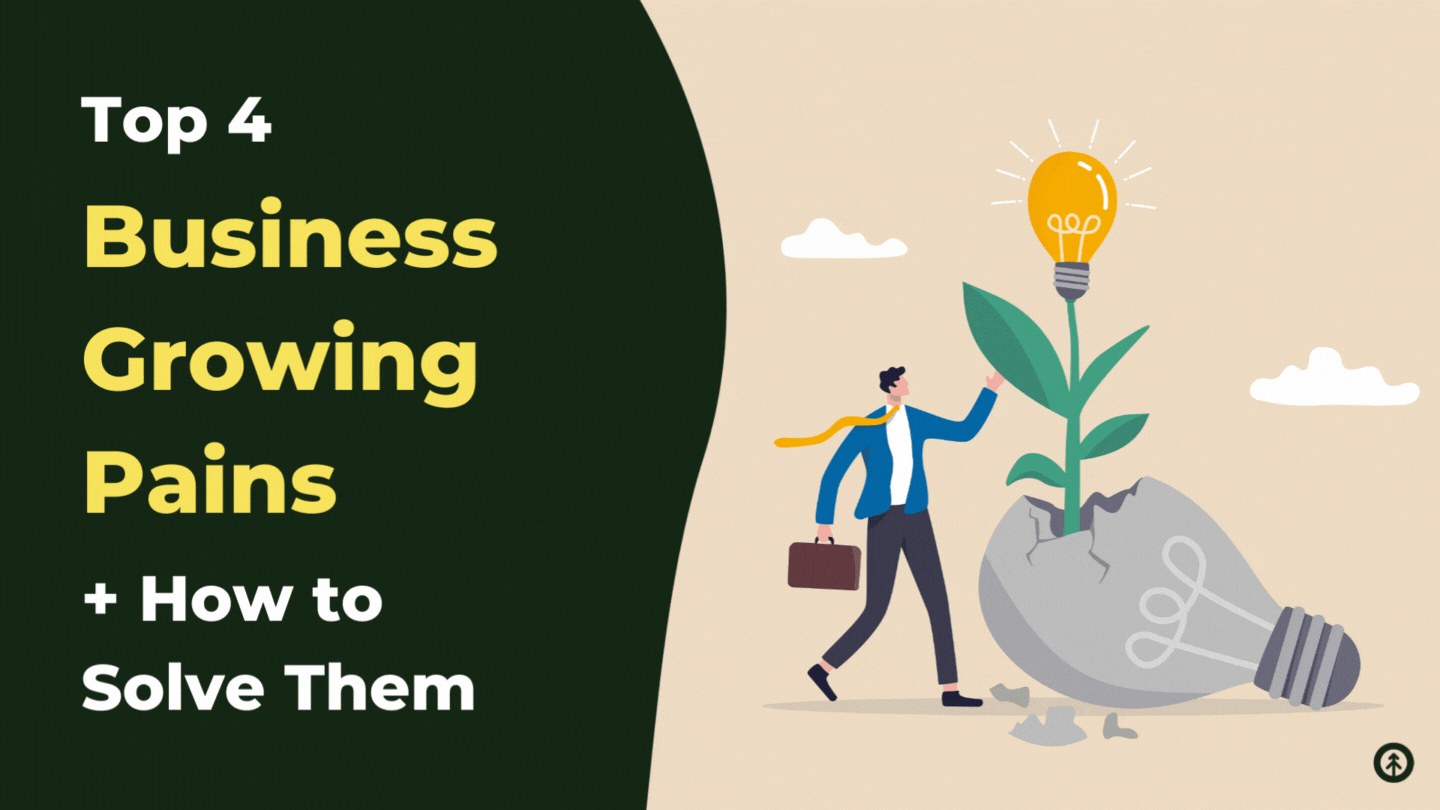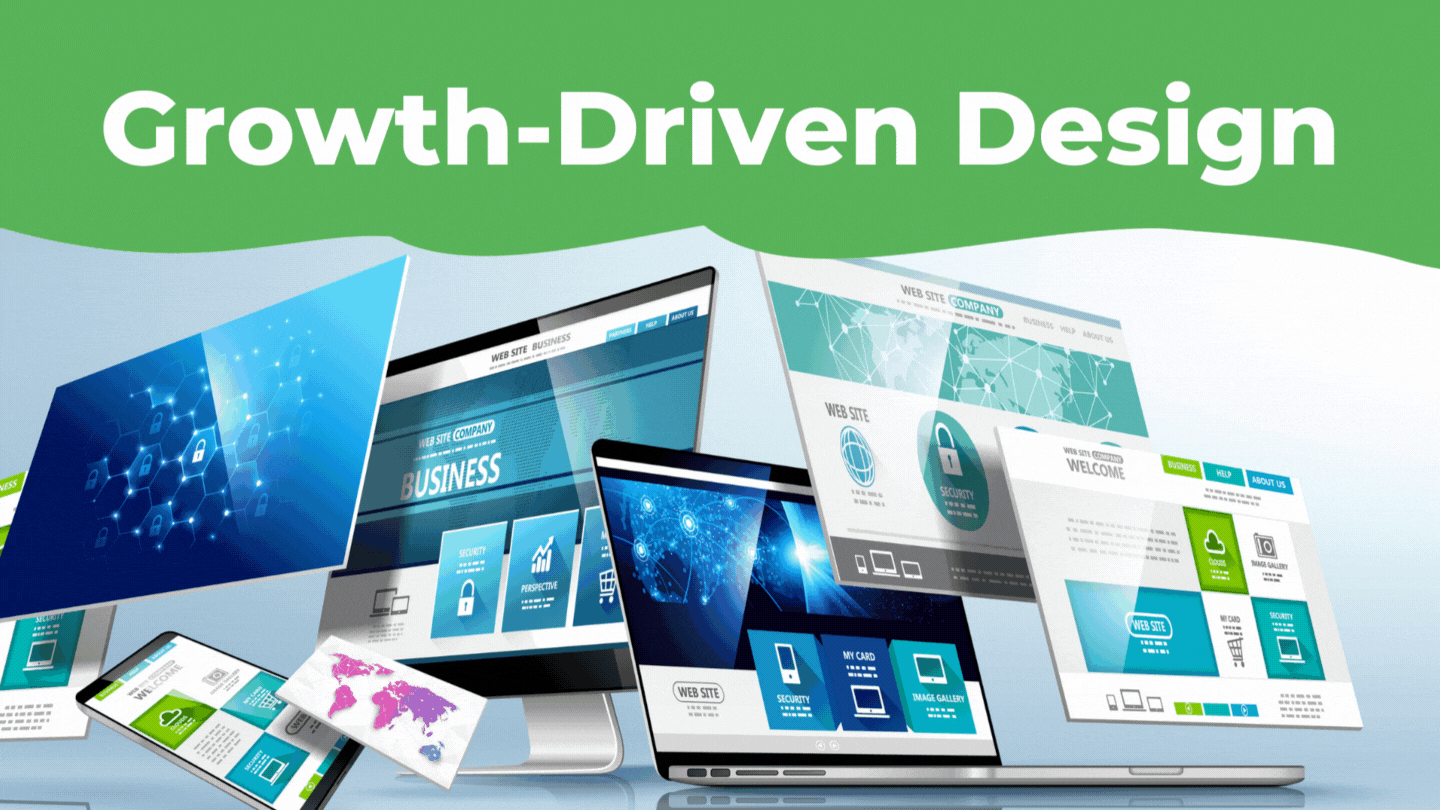What is Green Marketing + How to Build a Strategy
(Last updated October 4, 2022)
Organizations that benefit from green marketing show that they’re committed to the environment, sustainability, and social responsibility in everything they do—and consumers who care a great deal about this are growing exponentially.
To benefit from the green marketing that grabs the attention of these consumers, small businesses, nonprofits, and for-profit companies must meet some pretty strict criteria, and we’ve got the details.

What’s It Mean to Be Green?
Companies or organizations that create products or deliver services can be classified as “green” when they dedicate themselves to making, using, and delivering sustainable products that are sourced, produced, and packaged with the betterment of the planet in mind.
They consistently work to change the landscape of businesses’ involvement and responsibility in environmental protection, and, through their assistance in fighting climate change, green businesses go beyond their products and services.
In addition to focusing on sustainability as their core business function, they:
- advocate for sustainable policies
- raise environmental consciousness
- encourage local involvement in conservation efforts
- collaborate with other campaigns and groups, and more.
Strategy for Marketing Green

Companies that want to advertise their products as green must apply to do so, and receive a certification that they can then place on their products and marketing assets, including their websites.
Here are the steps and their details:
- Get certified.
- Advertise with a green message.
- Incorporate sustainability into your company culture.
- Support eco-friendly programs and initiatives.
1. Get certified.
To get certified as a green business, research the three different certifications: Green America, Green Business Certification, Inc., and Green Seal, and apply.
2. Advertise your green message.
Once you have a certification, get the word out that you’ve done so. Write blogs, post on your social media channels, add the certification seal to your website, etc.
Offer up your reasons for making this choice. You never know, it might inspire other companies to do the same.
All of your green marketing efforts build your brand and the loyalty of customers who, more and more, are demanding eco-consciousness from the businesses they choose.
3. Create a green company culture.
Commit to making a real difference by building more green practices into your company culture.
Recycling, going paperless, and making socially-conscious hiring choices—like hiring for diversity—are all efforts that create sustainable, eco-friendly workplaces (and a better world for everyone).
4. Support eco-friendly programs and initiatives.
Making donations to green, sustainable charities as a business is another way to stay aligned with your commitment.
Consistency like this builds trust and brand loyalty.
Green Marketing for Marketers
Green Marketing focuses its efforts on the eco-friendly manner in which products and services are made/delivered. It shows the green in green businesses and the sustainable benefits of using their services or products.
It's important to note, though, there are strict regulations and legal standards for marketing a product as green. Violations of these standards are called greenwashing.
Green Marketing vs. Greenwashing
Green marketing informs consumers that a product was made to eco-friendly standards, but greenwashing falsely advertises products as green that are not.
As a consumer, seeing the real certification listed on the packaging ensures that you’re buying a product that aligns with your dedication to living sustainably and protecting the environment.
Creating a false impression for consumers violates not just trust, but the law as well.
Pro Tips for Green Marketing
- Leave the trees as trees: go paperless.
- Giveaways that align with sustainability.
- Green events.
1. Leave the trees as trees: go paperless.
Only 2% of the people who receive direct, paper mail actually respond or find it helpful to them.
98% (!) of your direct mail goes into the trash.
Additionally, the fuel it takes to deliver 50 pieces of mail to get 1 lead is a massive waste. Audiences that care about the environment appreciate email instead of paper mail. Most people do, in fact.
2. Giveaways that align with sustainability.
Choose prizes for giveaways that support your sustainability mission. For example, a global, charitable donation that supports an environmental cause shows people that you put your money where your environmental consciousness is.
3. Green events.
It’s not just about what you produce, it’s also how you produce it. Create hybrid or entirely digital events so that fossil fuels aren’t used to get people there.
New technology is being created every day to meet this need, and there are plenty like Google Meet, Zoom, and others that people already know and love. Make good use of them, and people will appreciate you for it.
More and more everyday people become aware of the benefits of products and services that step lightly on the planet’s people and resources.
To gain their attention (and their business), move your organization toward a sustainable model, get certified, and get GROWTH! We’re green, we do green, and we love green.
Explore More Insights: Related Blog Posts
-
 Website DesignFeb 16, 2023
Website DesignFeb 16, 2023 Growth Marketing Firm
Growth Marketing FirmThe Role of Storytelling in Website Design
Everyone loves a good story. And from cave paintings to Tik Tok, humans have been using storytelling as a...
-
 AdvertisingAug 22, 2022Cody Kloock
AdvertisingAug 22, 2022Cody KloockAd Fatigue: The Rundown
Growth Marketing Firm · Ad Fatigue - The Rundown Have you ever been scrolling through social media and seen...
-
 Growth MindsetOct 7, 2022
Growth MindsetOct 7, 2022 Growth Marketing Firm
Growth Marketing FirmTop 4 Business Growing Pains + How to Solve Them
As your business grows, you'll inevitably experience growing pains—problems that arise from expanding too...
-
 Inbound MarketingJan 6, 2023
Inbound MarketingJan 6, 2023 Growth Marketing Firm
Growth Marketing FirmTop 4 SEO Benefits of Blogging
We already know that SEO drives business.
-
 Sales EnablementOct 3, 2021
Sales EnablementOct 3, 2021 Growth Marketing Firm
Growth Marketing FirmHow Efficient is Your Website? Our Grader Tool Knows. Ask It.
Cody Kloock · Website Grader A website grader is a tool that does exactly what its name suggests: it grades...
-
 Website DesignOct 2, 2023
Website DesignOct 2, 2023 Chris Nault
Chris NaultTransforming Your Website: What to Fix and How
In our recent enlightening webinar, Chris Nault, the CEO and founder of Growth, shared invaluable insights on...
-
 Sales EnablementJan 28, 2022
Sales EnablementJan 28, 2022 Growth Marketing Firm
Growth Marketing FirmLead Types: How to Identify + Engage Them to Increase Sales
In our previous blog article, 8 Daily Habits for a Healthy Sales Pipeline, we went over our top strategies...
-
 Tech StackSep 28, 2022
Tech StackSep 28, 2022 Growth Marketing Firm
Growth Marketing FirmTop 5 New Tools from Canva Creates 2022
The Growth team uses Canva for so many of our design collaborations because it makes it so easy to create...
-
 Website DesignSep 7, 2022
Website DesignSep 7, 2022 Growth Marketing Firm
Growth Marketing FirmWhat is Growth-Driven Design?
Growth-Driven Design (GDD) Definition Growth-Driven Design is a HubSpot-driven methodology for the design +...

